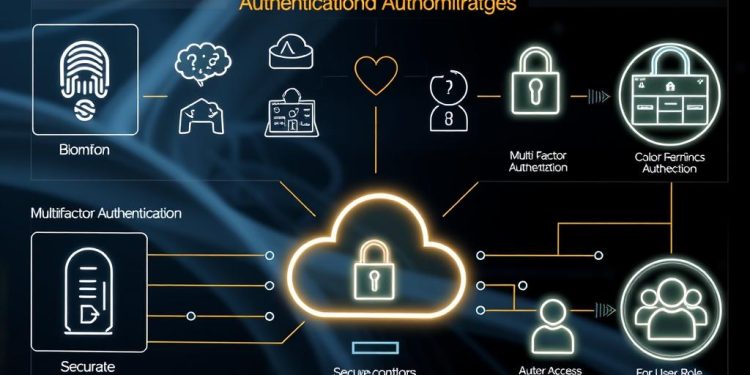In today’s rapidly advancing digital landscape, the significance of effective user data management and adherence to privacy laws cannot be overstated. You may already understand that Data Privacy Compliance plays a pivotal role in safeguarding user information from increasing threats. In an environment where data breaches are becoming alarmingly common—over 3,200 reported incidents in the U.S. in 2023 alone—implementing regulatory compliance measures becomes paramount for organizations of all sizes.
Failure to comply with regulations like the General Data Protection Regulation (GDPR) or the California Consumer Privacy Act (CCPA) can result in substantial penalties, including fines up to €20 million or 4% of global revenue under GDPR. On the local level, CCPA violations could cost up to $7,500 per infringement. Therefore, it’s crucial to not only understand these privacy laws but also to implement best practices that mitigate the risk of breaches. By prioritizing user data management, organizations can enhance their reputation and build trust with their consumers, ultimately leading to a competitive advantage in the marketplace.
Understanding Data Privacy and Its Importance
In today’s rapidly evolving digital landscape, the understanding of data privacy holds significant relevance. This concept refers to the management and protection of sensitive personal information shared during online transactions. With the staggering statistic that 90% of the data in use today was created in the last two years, grasping the importance of data privacy becomes crucial for organizations and individuals alike.
Definition of Data Privacy
Data privacy revolves around ensuring that individuals have control over their personal information. It involves various practices and measures designed to protect personal data from unauthorized access, use, or disclosure. In the digital age, businesses collect vast amounts of data about customers, making robust data privacy practices essential to uphold their trust and comply with regulations.
Why Data Privacy Matters in the Digital Age
The importance of data privacy has surged along with the increasing volume of data generated. As businesses expand their online presence, the risk of data breaches escalates. Organizations face severe consequences, such as substantial fines from regulations like the General Data Protection Regulation (GDPR), which can reach up to €20 million or 4% of total annual turnover for noncompliance. Furthermore, new state-level laws, similar to the California Consumer Privacy Act (CCPA), continually emerge, adding layers to compliance requirements, which reinforce the critical need for effective data privacy measures.
Impact of Data Breaches on Organizations
Data breaches can devastate organizations across all sectors. A staggering 61% of IT and compliance professionals reported experiencing a data breach or privacy violation within the last three years. The implications not only include financial loss, often seen in high-profile cases like Equifax and British Airways, which faced multi-million dollar settlements but also entail reputational damage and loss of consumer trust. As statistics reveal that 74.5% of retail organizations, 73.5% of educational entities, and 57.6% of government organizations are at direct risk of experiencing data breaches, the urgency for enhanced data privacy practices has never been more pronounced.
Key Regulations Governing Data Privacy Compliance
Understanding the key regulations that govern data privacy is critical for maintaining GDPR compliance, protecting consumer rights, and ensuring the security of personal information. With increasing scrutiny from regulatory bodies, organizations must be aware of the implications of these regulations to avoid costly fines and legal issues. This section outlines the main frameworks impacting data protection regulations.
General Data Protection Regulation (GDPR)
The GDPR is a comprehensive data protection regulation that applies across the European Union. It emphasizes user consent, data accuracy, and the rights of individuals over their personal data. Noncompliance can lead to severe penalties, with fines reaching up to 4% of a company’s global annual turnover or €20 million, whichever is greater. For example, in 2019, Google faced a fine of $56.6 million, while Amazon was hit with an unprecedented fine of $847 million in 2021 due to GDPR violations.
California Consumer Privacy Act (CCPA)
The CCPA grants California residents specific rights concerning the collection and use of their personal data. It allows consumers to know what data is being collected, the right to opt-out of sales, and the ability to sue for damages in case of data breaches. This act highlights the importance of privacy compliance, as ten unnamed companies faced CCPA enforcement actions in its inaugural year. Organizations must ensure they meet these requirements to avoid significant repercussions.
Health Insurance Portability and Accountability Act (HIPAA)
HIPAA focuses primarily on protecting sensitive patient information in the healthcare sector. Under HIPAA, the maximum fine per year for each category of violation is $1.5 million. Recent incidents, such as Excellus Health Plan settling for $5.1 million after a data breach affecting over 9 million customers, underscore the importance of adhering to these regulations.
| Regulation | Key Focus | Penalties for Noncompliance |
|---|---|---|
| GDPR | Data protection and privacy in the EU | Up to 4% of global annual turnover or €20 million |
| CCPA |
Data Privacy Compliance Best Practices
In today’s digital landscape, implementing data privacy best practices is not just advisable; it’s essential for organizations aiming to protect sensitive information and maintain consumer trust. Organizations should focus on three key areas: conducting regular risk assessments, implementing data minimization strategies, and establishing access controls. These practices foster accountability within the organization and support compliance with ever-evolving privacy regulations.
Conduct Regular Risk Assessments
Performing risk assessments is crucial for identifying vulnerabilities within your data protection framework. Organizations must continuously evaluate their systems to detect potential threats. A 9.8/10 severity flaw identified in Team City illustrates the critical vulnerabilities that may jeopardize compliance. Regular risk assessments ensure you remain proactive, adapting to new threats and minimizing risks associated with data handling.
Implement Data Minimization Strategies
Data minimization involves collecting only the necessary information required for business operations. This practice not only reduces the risk of data breaches but also simplifies compliance with regulations like GDPR and CCPA. A significant 70% of organizations report inadequate compliance with CCPA, highlighting the need for effective data minimization strategies to enhance overall compliance. By limiting the amount of personal information collected, organizations can protect consumer privacy and reduce potential liabilities.
Establish Access Controls
Implementing robust access controls ensures that only authorized personnel can access sensitive data. This practice can significantly mitigate the risks of unauthorized access, a major contributor to data breaches. With 62% of businesses facing more than one data privacy regulation, establishing clear access controls helps maintain compliance across various jurisdictions. These measures are fundamental to building a culture of privacy and security within your organization.
| Best Practice | Description | Benefits |
|---|---|---|
| Risk Assessments | Regular evaluations of data protection measures. | Identifies vulnerabilities and enhances security posture. |
| Data Minimization | Collecting only necessary personal information. | Reduces the risk of breaches and ensures compliance. |
| Access Controls | Restricting data access to authorized personnel only. | Mitigates risk of unauthorized access and supports compliance. |
Enhancing User Trust Through Transparency
Building strong user trust hinges on a commitment to transparency. Effective communication about data practices cultivates relationships with users while ensuring compliance with various regulations. This section delves into the necessity of clear consent policies and comprehensive privacy notices, empowering you to foster a trustworthy environment.
Importance of Clear Consent Policies
Clear consent policies are vital in meeting user expectations. By obtaining explicit consent, organizations assure users that their data will be handled responsibly. Effective consent management not only aligns with privacy regulations but also reinforces user trust. When individuals are fully informed about how their data is collected and used, they feel empowered and respected.
Developing Comprehensive Privacy Notices
Comprehensive privacy notices serve as a foundation for transparency. These documents should clearly outline what data is collected, how it’s used, and who it may be shared with. Ensuring accessibility to these notices enhances user understanding of your practices. When users can easily locate and comprehend privacy notices, their trust in your commitment to safeguarding their information deepens.
Secure Data Management Techniques
In the digital age, ensuring the protection of sensitive information is paramount. Organizations must adopt secure data management techniques to combat increasing data breaches and instill confidence among consumers. Effective measures include implementing data encryption and using secure storage solutions. These strategies help organizations safeguard sensitive data from unauthorized access and enhance compliance with privacy regulations.
Data Encryption: Protecting Sensitive Information
Data encryption represents a crucial step in sensitive information protection. By converting data into a coded format, organizations ensure that it remains unreadable to unauthorized users, even if data is intercepted. This layer of security provides peace of mind for both businesses and consumers. Moreover, regulatory compliance often necessitates data encryption to avoid severe fines. For instance, organizations facing GDPR non-compliance can incur hefty penalties.
- Encryption protects data during transfer and when at rest.
- Utilizing strong encryption standards, like AES-256, enhances security.
- Regularly updating encryption protocols is vital to counter new threats.
Utilizing Secure Data Storage Solutions
In addition to data encryption, organizations should employ secure storage solutions. This includes using password-protected databases and encrypted cloud storage options that ensure sensitive information protection. Limiting access to only authorized personnel will further bolster security measures. In fact, studies reveal that customers are significantly less likely to engage with companies if they are concerned about data practices. Implementing robust storage solutions can help mitigate these concerns.
- Adopt cloud services that prioritize data security.
- Regularly audit storage solutions to address vulnerabilities.
- Establish data governance policies to manage access effectively.
Employee Training and Awareness Programs
Building a robust privacy culture is crucial for any organization concerned about data privacy and compliance. Effective employee training programs serve as the backbone of a strong privacy culture. You can significantly minimize the risk of data breaches by ensuring that every employee understands their role in protecting sensitive information. Training sessions should not only highlight compliance awareness but also foster an environment of continuous learning about data protection practices.
Creating a Culture of Privacy Within the Organization
Organizations thrive when they prioritize a culture of privacy. With 38% of data breaches being attributed to human error, it’s essential that you make employee training a foundational element of your privacy strategy. By investing in programs that promote a sense of shared responsibility for data protection, you can see improvements across the board. Companies see a 50% reduction in incidents related to data privacy violations when they provide comprehensive training.
Regular Training on Compliance Measures
Regular and ongoing training seizes the momentum necessary to keep compliance awareness front and center. A structured training program increases the likelihood of identifying incidents of non-compliance by 70%. You should focus on familiarizing employees with crucial data protection regulations such as GDPR, CCPA, and HIPAA. Employees who lack understanding of these laws face a 60% higher chance of errors leading to breaches. Consider incorporating a mix of training formats, including online modules and in-person workshops, to meet diverse learning preferences.
| Statistic | Impact |
|---|---|
| 38% of data breaches caused by human error | Emphasizes training necessity |
| 45% reduction in breach risk with ongoing training | Supports training investment |
| 50% reduction in data privacy violation incidents | Shows effectiveness of employee programs |
| $4.24 million average breach cost | Highlights financial implications of inadequate training |
| 200% ROI on employee training | Demonstrates value of investing in training |
| 99% organizations agree training is necessary for GDPR compliance | Confirms universal training need |
Focusing on tailored training that reflects company-specific scenarios enhances relevance, ensuring employees can relate training to their daily responsibilities. Organizations that cultivate a strong privacy culture also protect their reputation, reinforcing the importance of investing in effective employee training programs.
Implementing an Incident Response Plan
Creating an effective incident response plan is essential for organizations striving for data breach preparedness and mitigating the impacts of cyber incidents. Many businesses face significant fallout from data breaches, highlighting the importance of being prepared for such events. A robust incident response plan contributes to crisis management by providing a clear pathway for addressing breaches swiftly and efficiently.
Importance of Preparedness for Data Breaches
Being prepared can make a crucial difference when a data breach occurs. Research indicates that 98% of organizations have set a recovery time objective (RTO) within one day to minimize business impact from cyber incidents. Despite this, only 2% manage to recover and restore critical processes within this timeframe. Furthermore, only 22% of businesses have implemented a formal cyber incident response plan, underscoring the need for improvement in this area. Establishing a comprehensive incident response plan not only protects against financial loss but enhances organizational reputation in times of crisis.
Steps to Follow in Case of a Data Breach
When faced with a data breach, following a structured approach can help mitigate damage. The six phases of an incident response plan include:
- Prepare: Develop and maintain an up-to-date incident response plan.
- Identify: Quickly ascertain the nature and scope of the breach.
- Contain: Limit the spread of damage and secure sensitive information.
- Eradicate: Remove the cause of the breach and mitigate further risks.
- Recover: Restore systems to normal operations while monitoring for any residual issues.
- Review: Conduct a thorough analysis of the incident to improve future responses.
Utilizing frameworks such as NIST 800-61 can aid in effectively navigating these steps. Additionally, involving legal, compliance, and public relations teams in the incident response process transforms it into a multi-departmental effort, essential for thorough crisis management. Regular drills and updates are vital to adapt to the evolving cyber threat landscape. Investing in automation tools can reduce human error, ensuring faster response times during critical situations.
Conclusion
Data privacy compliance is an essential and ongoing commitment for any organization navigating today’s digital landscape. Understanding your regulatory obligations, such as those outlined in the GDPR and CCPA, is crucial for effective user data management. By adhering to user data management best practices, you not only protect sensitive information but also safeguard your organization against potential legal consequences and hefty fines, which can reach up to 4% of global turnover for GDPR violations.
Moreover, building trust through transparency strengthens your relationship with users. Organizations are increasingly held accountable for how they manage user data, with consumers now expecting clear privacy notices and consent policies. A commitment to compliance ensures that you honor these expectations and enhances your organization’s reputation, reflecting positively on your overall business strategy.
In a world where over 100 countries have enacted data privacy laws, maintaining a proactive approach to data privacy compliance is more important than ever. By integrating comprehensive privacy measures and conducting regular data health assessments, you significantly reduce compliance-related issues, thereby fostering a culture of trust and security within your organization.










